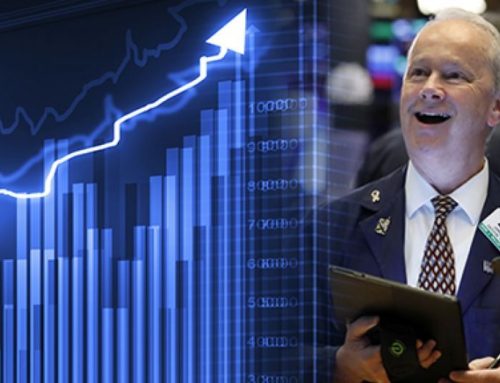
Contradictions…
October started off with a bang to the downside with the Dow dropping 3.1% in the first two days of the month. That was the worst start to a quarter since 2008. The Dow fell 832 points on Tuesday and Wednesday, spiking fears that the “big decline” was imminent. Thursday’s ISM (Institute for Supply Management) business activity report further spooked the markets with a 52.6 print versus forecasts of 55.3 and the Dow plunged another 300 points bringing the 3-day total decline of 1132 points.
However, as has been the case for the past several years, fears of an economic slowdown led to hopes of a Fed rate cut and the markets turned around with the Dow rallying 122 points on the day. Tariff worries temporarily eased and expectations of more easing to come fueled the turnaround for the day.
Friday brought us the jobs number and while the headline report for non-farm payrolls of 136,000 versus consensus of 150,000 was disappointing, it was outweighed by the revisions of the prior two months as well as the low unemployment rate of 3.5%, the lowest since 1969. Average hours worked remained flat and the year over year rise was just 2.9% but the focus was on the unemployment rate.
The ISM manufacturing index for September was also weak, reported at 47.8 versus August’s 49.1 and the lowest level since 2009. The bulls on Wall Street are discounting this as a qualitative measure due to the nature of the survey. However, odds for a recession certainly seem to be increasing. The NY Federal Reserve is forecasting a 38% chance of recession in the next 12-months.
With all the news and noise, the major indices started the month off with losses. The Dow dropped 0.9% to close at 26,573 while the S&P fell 0.3% to finish the week at 2952. Nasdaq declined by 0.5% ending at 7982.
Economic indicators…
As we move further into October, earnings season will begin. As we are in the final quarter, the focus will be forward as investors look towards 2020 estimates. According to ZeroHedge, consensus earnings estimates for the S&P have dropped $10 since April 2019.
FactSet’s poll of analysts’ state earnings per share for the S&P companies will fall 4.1% from the estimates this time last year. Wall Street is still saying earnings will increase by 10% in 2020 but get ready for more downward revisions. The game with earnings is revise down, under-estimate and then report an upside surprise.
Lance Roberts, of RealInvestmentAdvice blog, stated in a ZeroHedge article that LEI (leading economic indicators) are showing continued weakness and forecasts for weaker economic growth. The deviation between the markets and corporate profit growth continues to increase and is the highest since 1999.
The PPI (Producer Price Index) was reported on October 8th with the biggest drop since September 2015. July’s decline was offset by a rebound in August but the headline number of 0.3% was well below the 0.1% consensus. Core PPI, which excludes food and energy, was down 0.3% versus a forecast of 0.2% and over half the decline was attributed to weak machinery and vehicle wholesale production. Retail malls continue to struggle as Q3 hit a 9.4% vacancy rate, the highest since 2004 according to Moody’s Analytics.
At the same time, we seem to be facing a crisis in the skies as 2019 is on pace for the most bankruptcies in the airline industry in history. Through September, seventeen airlines have filed for bankruptcy protection globally including India’s Jet Airways, British Thomas Cook agency and Brazil’s Avianca among them. Reuters reported that weakness in the airline section typically gain just before an economic downturn.
With many indicators pointing to economic weakness, investors returned to the theme of bad news is good news as they expect the Fed to lower rates at their next meeting in October. All hopes are pinned on more quantitative easing and liquidity from the Fed to buoy the markets.
According to M12’s chief economist, Julian Braden, the tightening of the Fed’s balance sheet so far is equivalent to a 7.5% raise in rates. He points out that in the past a 3% increase in rates was a trigger for a recession.
Risk management is key in this kind of market. The bond market rallied again last week but bonds are not likely to provide a safe haven for long. Credit risk and interest rate risk are two factors to be concerned about when investing in bonds. If rates rise and economic weakness prevails, bonds suffer. Be prudent about your portfolio and as always, feel free to reach out for a second opinion.





Leave A Comment